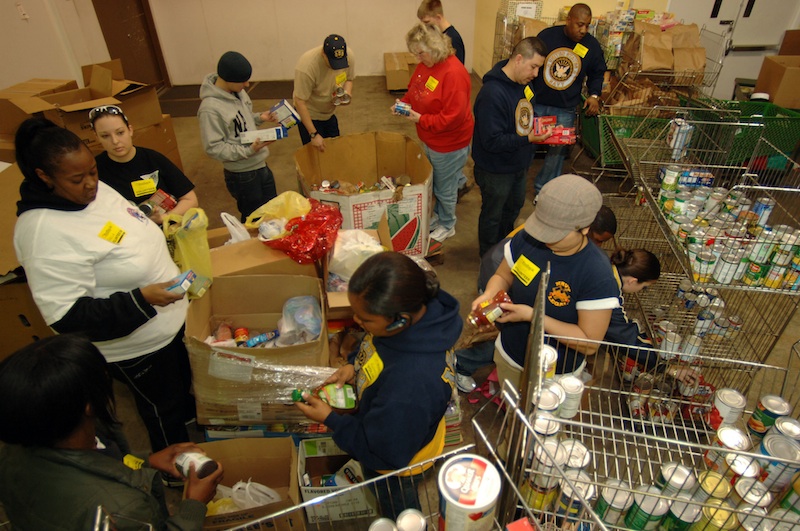More than 46 million people, including 12 million children, rely on food pantries and meal service programs to feed themselves and their families, according to a new study released yesterday by Feeding America, the nation’s largest provider of charitable food pantries for low-income Americans.
That’s one in seven Americans, according to “Hunger in America 2014“, the largest and most comprehensive study of people seeking food assistance in the United States ever conducted. More than 60,000 people who received assistance answered questions about their lifestyles and families.
So who are our friends and neighbors who have to get some help from the local food pantry network?
1. Military Families
Nearly 620,000 households have a family who is currently serving in the US military.
20% of households served by the Feeding America network include someone who is a current or prior service member. (This is the first nationally-representative study that assesses the prevalence of the U.S. Military and their families receiving pantry assistance. ) In fact, another recent study unearthed the shocking statistic that 25% of American military families receive food stamp benefits.
2. Chronically Ill
33% of households relying on food pantries included a family member with diabetes, while 58% had a family member who had been diagnosed with high blood pressure. Despite chronic conditions, 79% of survey respondents said that they were forced to purchase the cheapest food available in an effort to provide enough food for their household, and 66% of households reported having to choose between paying for food or medical care.
3. Unemployed or Underemployed, Disabled and/or Retired
72% of Feeding America’s clients live at or below the poverty link. Out of 620,000 clients, the median annual income of Feeding America clients was just $9,175. 16% of them had been unable to avoid rent and been forced from their homes (evicted) at one time in the past few years. However, unemployment was not necessarily a chronic condition; 54% of households had at least one member that has been employed in the past year. In families with kids, 71% had at least one parent employed within the past year.
12 million recipients of food bank assistance were seniors.
4. Living On The Edge of Hunger
Food pantry clients often struggled to make ends meet, and sometimes had to choose between food and utilities, rent, educational expenses, transportation and medical care.
Sometimes this meant sacrifices we’d never think of, like the 40% of respondents who said that they “watered down” food or drinks to make sure they had enough food to go around.
Sometimes this meant eating food past its expiration date.
Food bank recipients often had to pool resources to live day to day.
35% of respondents had resorted to pawning personal possessions to get enough money for a meal.
53% relied on families and friends for additional assistance, while 23% had learned to grow their own food in a garden.
